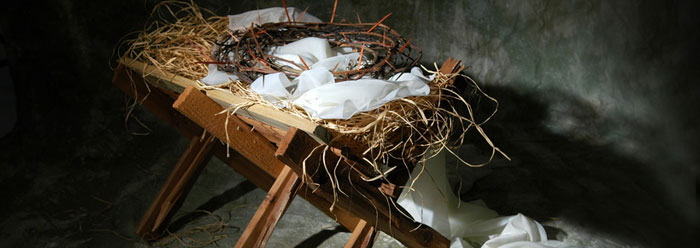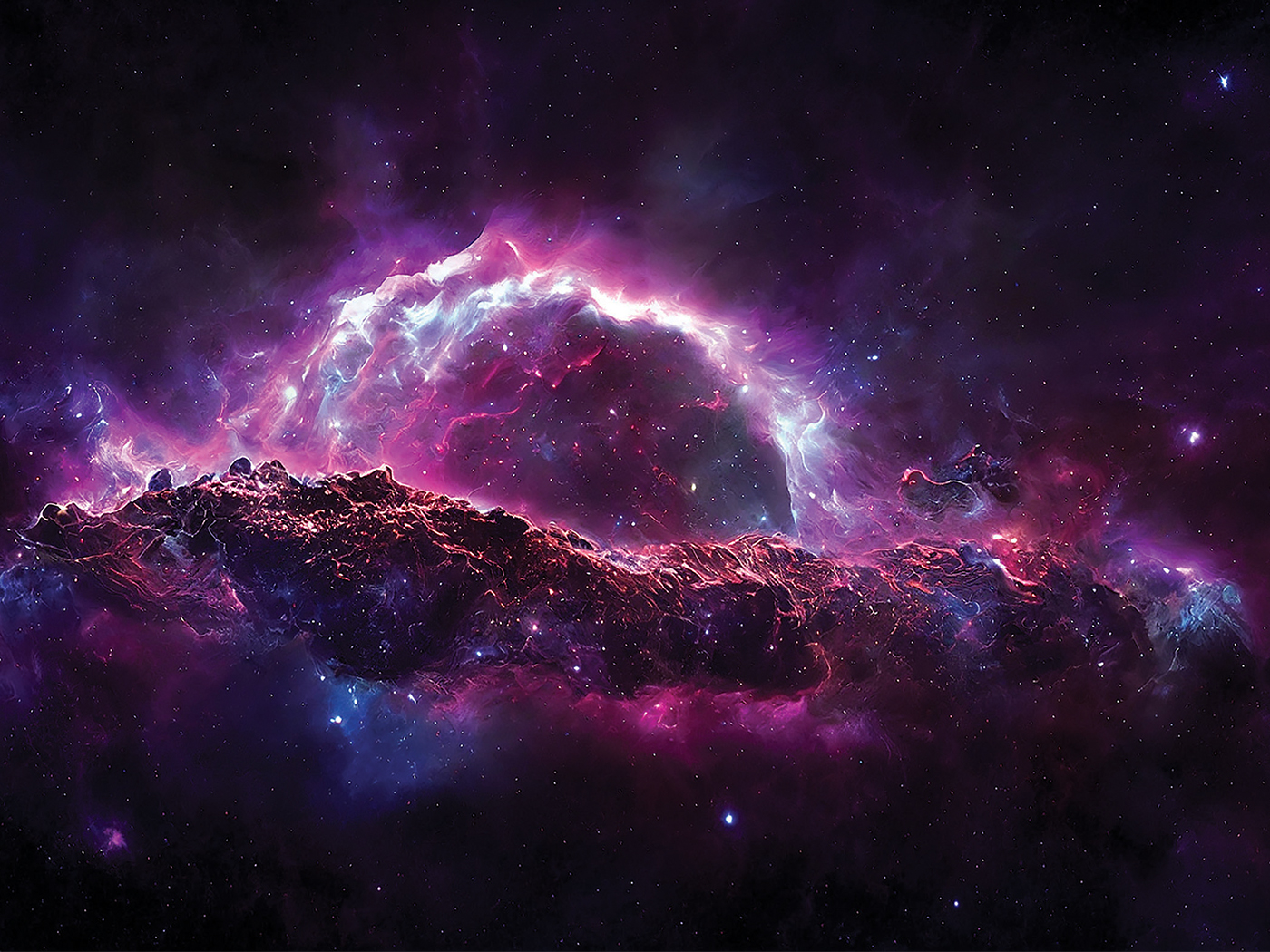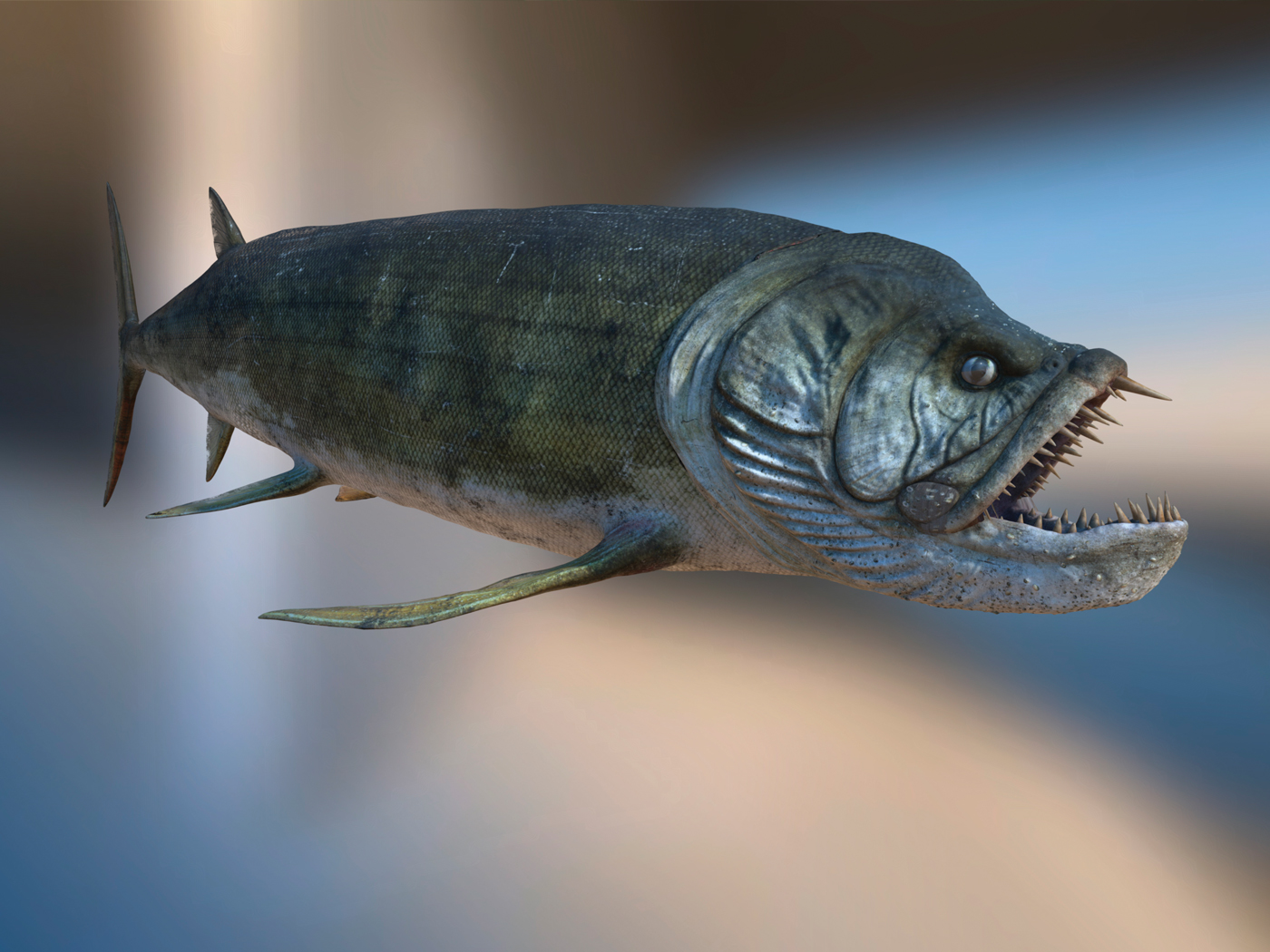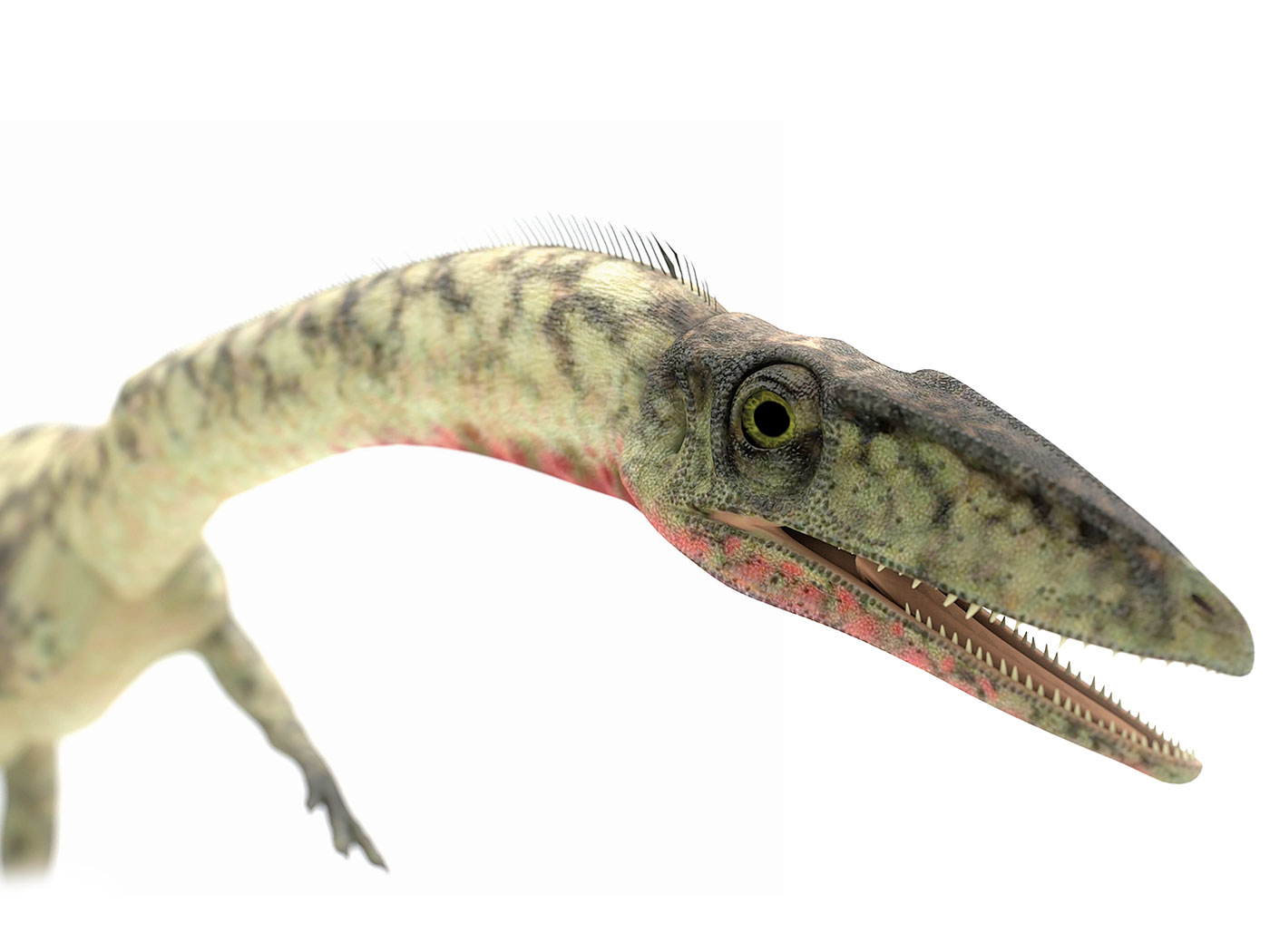The incarnation of Jesus Christ is such an important doctrine of the New Testament that without it there can be no true Christianity. "Every spirit that confesseth that Jesus Christ is come in the flesh is of God: And every spirit that confesseth not that Jesus Christ is come in the flesh is not of God" (I John 4:2,3).
But how can the one who "was God" (John 1:2) from the beginning be the same one who "was made flesh, and dwelt among us?" (John 1:1,14). How can He truly be "Emmanuel, which being interpreted is, God with us?" (Matthew 1:23). How can the infinite, eternal God become finite and temporal? Such a concept seems impossibly paradoxical, yet millions quite properly believe it to be a real and vital truth.
Perhaps the most amazing aspect of the incarnation is that a God who is absolute holiness could reside in a body of human flesh. Is it not true that "they that are in the flesh cannot please God?" (Romans 8:8). Our human bodies have been formed through many generations of genetic inheritance from Adam himself, and "in Adam all die" (I Corinthians 15:22).
The paradox is partially resolved, of course, when it is realized that Jesus Christ came in a body which was not of sinful flesh. His body was truly "in the flesh," but only "in the likeness of sinful flesh" (Romans 8:3).
But even this doesn't resolve the dilemma completely, for how could His body be of flesh (carbon, hydrogen, amino acids, proteins, etc.), received by the normal process of reproduction of the flesh of his parents, without also receiving their genetic inheritance, which is exactly what makes it sinful flesh? "Behold, I was shapen in iniquity; and in sin did my mother conceive me" (Psalm 51:5). "Man that is born of a woman is of few days, and full of trouble … Who can bring a clean thing out of an unclean? not one" (Job 14:4).
The Problem of Inherited Physical Defects
Not only is there the problem of inherent sin, but also of inherent physical defects. Over many generations, the human population has experienced great numbers of genetic mutations, and these defective physical factors have been incorporated into the common genetic pool, affecting in some degree every infant ever born. Yet the Lamb of God, to be an acceptable sacrifice for the sins of the world, must be "without blemish and without spot" (I Peter 1:19). The very purpose of the incarnation was that God could become the Saviour of men as well as their Creator, but this required that in His humanity He must be "holy, harmless, undefiled, separate from sinners" (Hebrews 7:26), and this would have been absolutely impossible by the normal reproductive process.
The solution could only be through a mighty miracle! He could not be conceived in the same manner as other men, for this would inevitably give him both a sin-nature and a physically defective body, and each would disqualify Him as a fit Redeemer. And yet He must truly become human. "Wherefore in all things it behoved Him to be made like unto His brethren, that He might be a merciful and faithful high priest in things pertaining to God, to make reconciliation for the sins of the people" (Hebrews 2:17).
It is not surprising, therefore, that the Christian doctrine of the Virgin Birth of Christ has always been such a watershed between true Christians and either non-Christians or pseudoChristians.1 Without such a miraculous birth, there could have been no true incarnation and therefore no salvation. The man Jesus would have been a sinner by birth and thus in need of a Saviour Himself.
On second thought, however, one realizes that it was not the virgin birth which was significant, except as a testimony of the necessity of the real miracle, the supernatural conception. The birth of Christ was natural and normal in every way, including the full period of human gestation in the womb of Mary. In all points, He was made like His brethren, experiencing every aspect of human life from conception through birth and growth to death. He was true man in every detail, except for sin and its physical effects.
The miracle was not His birth, but His conception. And here we still face a mystery. Conception normally is the result of the union of two germ cells, the egg from the mother and the seed from the father, each carrying half the inheritance and thus each, of course, sharing equally in the transmission of the sin-nature as well as all other aspects of the human nature.
"Each individual gets exactly half of his chromosomes and half of his genes from his mother and half from his father. Because of the nature of gene interaction, the offspring may resemble one parent more than the other, but the two parents make equal contributions to its inheritance."2
Each parent thus also makes an equal contribution of defective physical and mental characteristics due to inherited mutations. Both mental and physical traits are inherited in this way.
Some writers have tried to make the virgin birth appear more amenable to human reason by comparing it to the process of parthenogenesis, which has been known to occur in some insects and even in some mammals, by which process the female egg begins to divide and grow into a mature animal without every being fertilized. Others have compared it to the process of artificial insemination, by which the sperm is artificially introduced into the egg without actual copulation.
In addition to the rather crude concept of the work of the Holy Spirit which such suggestions involve, neither solves the problem of how the contribution of inherent defects contained in the mother's germ cell are kept from the developing embryo. If genetic inheritance in any degree is received from either parent, there seems to be no natural way by which the transmission of the sin-nature, as well as physical defects, could have been prevented.
The Necessity of Special Creation
Therefore, even though He was nurtured in Mary's womb for nine months and born without her ever knowing a man, it was also necessary for all this to have been preceded by supernatural intervention, to prevent His receiving any actual genetic inheritance through her. The body growing in Mary's womb must have been specially created in full perfection, and placed there by the Holy Spirit, in order for it to be free of inherent sin damage. Christ would still be "made of the seed of David according to the flesh" (Romans 1:3), because His body was nurtured and born of Mary, who was herself of the seed of David. He would still be the Son of Man, sharing all universal human experience from conception to death, except sin. He is truly "the seed of the woman" (Genesis 3:15), His body formed neither of the seed of the man nor the egg of the woman, but grown from a unique Seed planted in the woman's body by God Himself.
That is, God directly formed a body for the second Adam just as He had for the first Adam (Genesis 2:7). This was nothing less than a miracle of creation, capable of accomplishment only by the Creator Himself. "That holy thing which shall be born of thee shall be called the Son of God" (Luke 1:35).
Surely God would devote no more attention to the design and construction of the body of "the first man, of the earth, earthy" than He would to that of "the second man, the Lord from heaven" (I Corinthians 15:47)!
The Marvel Of Inheritance and Pre-Natal Growth
For that matter, the formation of every human body is a marvelous testimony to the power and wisdom of the Creator of the first human body, and so is His provision for its reproductive multiplication into the billions of bodies of distinctive individuals who have lived through the ages. "I will praise thee; for I am fearfully and wonderfully made" (Psalm 139:14).
The 139th Psalm contains a remarkably beautiful and scientifically accurate description of the divine forethought in the processes of heredity and embryonic growth. Verses 15 and 16 of this psalm (with explanatory comments interspersed) are as follows:
"My substance (literally, my frame) was not hid from thee, when I was made in secret, and curiously wrought (literally embroidered -- probably a foregleam of the intricate double- helical structure of the DNA molecule as it carries out its function of template reproduction of the pattern provided by the parents) in the lowest (or least seen) parts of the earth (God originally made the dust of the earth -- the basic elements -- then man's body from those elements, and then the marvelous ability to multiply that body)." (Verse 15)
"Thine eyes did see ‘my substance yet being unperfect" (all one word, meaning embryo, in the original; note the embryo is not imperfect, but unperfect, still in the process of being completed); and in thy book all my members were written, which in continuance (literally which days -- that is, all the days of development and growth were planned from the beginning) were fashioned (same word as formed, used in Genesis 2:7 for the formation of Adam's body) when as yet there was none of them (the whole amazing process was written into the genetic code even before actual conception)." (Verse 16)
The Body of Christ
With such careful divine care and attention given to the development of every one of the billions of human bodies conceived since the days of Adam and Eve, how much greater must have been the extent of the divine preparation of the body of God's own Son! As a matter of fact, the design for His body was prepared before the very foundation of the world itself (I Peter 1:20; Hebrews 10:5). It is probable that, in some degree at least, God had this very body in mind when He undertook to make Adam "in our image after our likeness" (Genesis 1:26). That is, God formed for Adam a body patterned after that perfect body which had already been planned for the divine incarnation, when the time would come.
Then, "when the fulness of the time was come, God sent forth His Son, made of a woman that we might receive the adoption of sons" (Galatians 4:4,5).
"Wherefore when He cometh into the world, He saith, sacrifice and offering thou wouldest not, but a body hast thou prepared me" (Hebrews 10:5). The verb "prepared" in this verse is striking. It is the same word in the Greek (i.e., katartizo) as used in the next succeeding chapter in Hebrews, in one of the greatest of all those verses in the Bible describing the Creation. "Through faith we understand that the worlds were framed by the word of God, so that things which are seen were not made of things which do appear" (Hebrews 11:3).
The "preparation" of Christ's body by God was the same process as the "framing" of the worlds by God! As the latter were created ex nihilo ("not out of things which do appear"), so must have been the former. The word is also translated "make perfect" (Hebrews 13:21, etc.).
Thus, the body of Christ was prepared by the great Creator, with no dependence on prior materials, and was made in total perfection, ready to receive Him as its occupant. In that perfect body, which would one day be "made sin" and would "bear our sins" on the tree (II Corinthians 5:21, 1 Peter 2:24), He would dwell forever after its resurrection and glorification (Revelation 1:14-18).
When God created the world, it was only a little thing (Isaiah 40:15-17), but the formation of any human body required the special planning of divine omniscience, eliciting the inspired testimony, "How precious also are thy thoughts unto me, O God! how great is the sum of them!" (Psalm 139:17).
The greatest of all creations, however, was that of the body in which His Son would take up His eternal abode. Miraculously created and conceived, then virgin-born, God's eternal Son became the perfect Son of Man.
There is yet another "body of Christ," of which all believers become members, now in process of formation, with Christ the head (Ephesians 4:15, 16). This body also is being supernaturally formed by the Holy Spirit (I Corinthians 12:13), with no genetic inheritance from sinful flesh. Its members are "born, not of blood, nor of the will of the flesh, nor of the will of man, but of God" (John 1:13), so that when complete it also will be a body "not having spot, or wrinkle, or any such thing; but that it should be holy and without blemish" (Ephesians 5:27).
Here is another mighty act of special creation, repeated again and again whenever a new member is added to Christ's body, when a new son of God is born. "But as many as received Him, to them gave He power to become the sons of God, even to them that believe on His name" (John 1:12). "Therefore if any man be in Christ, be is a new creation" (II Corinthians 5:17). These have "put on the new man, which after God is created in righteousness and true holiness" (Ephesians 4:24). "Ye have put off the old man with his deeds; and have put on the new man, which is renewed in knowledge after the image of Him that created him" (Colossians 3:10). "For we are His workmanship, created in Christ Jesus unto good works" (Ephesians 2:10).
The virgin birth of Jesus Christ thus testifies of the marvelous creation of His human body, which then speaks symbolically of the marvelous member-by-member creation of His spiritual body.
REFERENCES
- For answers to the various objections to the doctrine of the virgin birth, see the writer's discussion in Many Infallible Proofs (San Diego, Creation-Life Publishers, 1974), pp. 54-63.
- Claude A. Vilee (Harvard University), Biology (Philadelphia, W. B. Sanders, Co., 1962), p. 462.
* Dr. Henry M. Morris (1918-2006) was Founder and President Emeritus of ICR.
Cite this article: Morris, H. 1975. Creation and the Virgin Birth.Acts & Facts. 4 (10).





















